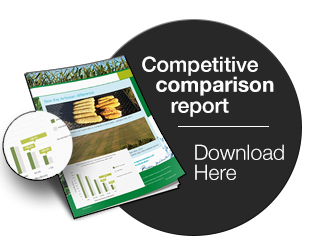Early Season Insects of Corn
- Selection of high-yielding soybean products may have the greatest effect on yield potential above all other management decisions.
- Proper and timely insect, disease, and weed management can improve yield potential.
- Planting considerations including earlier planting, higher plant populations, and narrower row spacing
lead to quicker canopy closure, which can increase yield.
Trait Selection
Because yield potential is primarily determined by genetics in soybean, products should be selected that perform well in yield trials over a wide geographical range and over several years. Besides increased yield potential, soybean products on the market can be selected for maturity groups, standability, plant height, and disease, insect, and nematode resistance. Soybeans engineered with herbicide tolerance traits are also available. Consider the characteristics of the field, the planting history, and the history of disease and insect problems before selecting soybean products for the next season.
Insect and Disease Management
Soybean yield can be negatively affected by insect pests, fungi, bacteria, viruses, and nematodes. An integrated pest management (IPM) approach is the most economically sound way to protect yield potential while limiting input costs and environmental hazards. The IPM strategy utilizes host resistance with biological control, pest monitoring, chemical control when thresholds are reached, and good agronomic management practices to mitigate yield losses. Management decisions are usually made on a field by field basis and control tactics will depend on the particular pests or diseases present.

Excessive foliage loss from insect feeding can affect soybean yield, especially when it occurs during the reproductive stages (Figure 1). Soybeans will compensate for insect feeding damage by adjusting the number of pods, seeds per pod, and seed size. Foliage feeders are targeted with insecticides when insect populations are at or above the number required to cause defoliation levels listed for the developmental stage of the plants. Stem feeders are usually targeted from plant emergence to 10 inches in height when plant stand is being reduced below recommended plant populations.1
Some soybean pests, such as soybean cyst nematode, cannot be eradicated from a field once established. To protect yield potential, nematode population densities can be controlled through crop rotation, soybean resistance, and good agricultural practices.
Weed Management
The critical period of weed control (CPWC) is a period in the life- cycle of the crop when weed competition causes crop yield loss. Field and crop conditions including soybean seedling establishment, weed density, weed species, crop row
spacing, and tillage system are some of the factors affecting weed management decisions and the CPWC. The critical time for weed removal is at the beginning of this period. For soybean, this is usually the V1 stage, but can vary depending on row spacing. A yield loss of 2% for each leaf stage of delay after the critical time for weed removal has been reported when weed removal has been postponed.3
Early-season weed control is important for early soybean canopy development as weeds will compete for water and nutrients. Residual herbicides are a key component of early weed control. Consider rate, mode-of-action, tank-mixes, and timing when using residual herbicides.
Soil Fertility
Soybean can obtain 50 to 75% of its nitrogen (N) requirements from biological nitrogen fixation (BNF)4, so it is important that the nitrogen fixing bacterium Bradyrhizobium japonicum is present in the soil. Seed inoculation with B. japonicum can increase nitrogen fixation and may improve yield potential. When the supply of N from the soil and nitrogen-fixing nodules is not adequate, benefits can be achieved from applying N fertilizer.
Soils tests are an important management tool for determining soil pH and fertility needs but soil tests cannot accurately predict the need for N fertilizer in soybean. Growers should consider these field conditions when determining the need for supplemental N:
- Crop is not uniformly dark green in color.
- Soil pH is lower than 5.5.
- Soil is light colored/eroded/compacted.
- Soybeans have not been grown in the field for several years.
- Active nodules are not seen on roots.
- Nitrogen deficiency symptoms are present.
If additional N is needed, application is recommended closer to early pod fill, the R5 to R8 stages, when N is in greatest demand by soybean plants.
Earlier Planting
Planting soybeans earlier can help increase yield potential because it allows for earlier canopy closure that can maximize light interception during June and July. Early canopy closure can lead to an increase in the number of plant nodes, earlier flowering and a longer reproductive period, an increased crop growth rate during pod set leading to a greater seed filling rate, and earlier harvest. In addition, early canopy development can help in conservation of soil moisture, which is critical during reproductive periods. Researchers at the University of Wisconsin found that soybean yield decreased by 0.4 bushels per acre per day, when planting was delayed past the first week of May.6
When planting early, it is important to wait until good soil and seedbed conditions exist. Planting when soil is too wet can result in compaction and poor seed placement and stand establishment. Additionally, seeds that are planted when soils are too wet and temperatures are too cool may sit dormant and can become more vulnerable to diseases, insects, and animal predators. Planting soybeans in wet soils will likely negate any yield advantage from planting early.
Higher Plant Population
Higher plant populations can also lead to quicker canopy closure and improved yields; however, this outcome can vary by relative maturity (RM). Higher plant populations have some advantages including quicker canopy closure, greater light interception, and decreased weed competition. However, yield does not always increase as soybean plant population increases. To maximize yield potential, growers should have no less than 100,000 plants per acre in 7.5– and 15-inch rows and no less than 80,000 plants per acre in 30-inch rows8, 10.
A greater seeding rate is usually required to achieve the intended final plant stand. Poor seedbed conditions, low seed quality, inaccurate planter adjustment, soil crusting, extremely wet soils, disease and insect pressure, and hail or frost damage are factors that can reduce final plant stand. Iowa State University recommends a 15 to 30% increase in seeding rate over the desired final plant stand to compensate for any plant loss.
Row Configurations
Research has shown that narrow rows (less than 30 inches) yield greater than wide rows (30 inches or greater). Narrower rows also promote quicker canopy closure, which in turn improves light interception, weed control, and soil moisture retention. In Iowa, an average 4.5 bushels per acre increase can be expected when using 15-inch row spacing, compared to 30-inch row spacing.8
Twin-row configurations are gaining popularity for the potential for increased yields. A Monsanto demonstration trial showed that 30-inch twin rows provided a yield advantage over conventional 30-inch rows9. The attraction of the twin row configuration is based on the ability to utilize the same planter for corn and soybeans, utilize the 30-inch harvest equipment in corn and possibly still see a benefit in soybeans similar to what would be expected in narrow row spacing.

